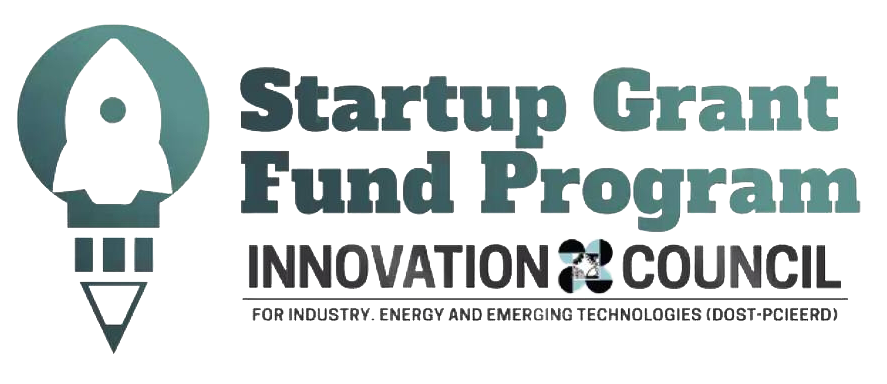Certification by the International Organization for Standardization (ISO) fosters esteem and trust amongst clients, customers, and various other companies. Throughout this article, we outline ISO certification in the Philippines, discuss why a company would wish to seek it, and walk you through the process of obtaining the specific accreditation.
In the contemporary global marketplace, such a credential confirms that a corporation complies with worldwide quality management, production, and regulatory requirements. Recognizing what ISO certification comprises will assist companies in optimizing operations and creating credibility among all stakeholders.

What is the ISO?
The ISO (International Organization for Standardization) creates guidelines to guarantee the efficacy, effectiveness, and caliber of products, services, and processes. It is a non-governmental organization that began with ISO 9000, a set of five management quality assurance standards for businesses. These standards span different areas and aim to ensure companies provide quality operations.
Since its inception, it has grown to have ISO 9000:2015, one of the latest versions of the certification. Professionals across all levels of an international sector undergoing certification are creating and implementing novel norms as innovation proceeds to advance quickly. With these standards, businesses all over the world are able to provide better services and products.
Brief History of the ISO
The ISO has grown over the previous 75 years to encompass 165 member nations, approximately 800 technical boards and groups, and over 23,000 global regulations. The beginnings of the association may be traced back to 1946 when 65 representatives from 25 nations convened in London to debate the years that followed the war.
ISO was founded in 1947 with 67 professional panels, which consisted of specialists with expertise on a given matter. Among the countries where ISO certification is implemented, ISO certification in the Philippines is also a popular accreditation for businesses to gain quality assurance.
Why Should Businesses Obtain an ISO Certification?
A worldwide accepted system of guidelines called ISO certification conveys excellence to clients in many different areas, including healthcare equipment, commerce practice, security, environmental oversight, and quality administration. An organization may demonstrate to consumers that it is prepared to collaborate within a predetermined structure in order to reach its business goals by acquiring an ISO-certified firm.
This translates to superior end goods, less risk, and enhanced business procedures. A company’s dedication to upholding control over its operations and procedures by providing high-quality goods in accordance with uniform delivery standards is demonstrated by ISO certification. Additionally, ISO-certified businesses can set themselves apart from other companies.
Common Types of ISO Certification
ISO 9001
The method is an established approach for developing, implementing, and maintaining a quality control system tailored to a specific company. It is applicable to every kind of funding firm. The most recent and improved accreditation criteria were released at the close of 2015 and have remained in use since then.
ISO 20000
This set of guidelines is concerned with providing effective IT Service Management for any firm. This is a must-have for every industry that relies on technology. It has an impact on the activities of your business and the way you interact. It’s an important component of how you do company.
ISO 27001
This relates to a data safety standard that establishes an organizational system intended for data protection and oversight by management. With this certification, businesses may guarantee the safety standards they have implemented for their employees and consumers.
ISO 14001
The following is a guide on how to set up a system for managing the environment. It consists of techniques, guidelines, tactics, operations, and papers that explain how your company should interact with the natural environment. ISO 14001 offers a structure and regulations for any firm to create an EMS.
ISO 22000
The specifications for establishing a successful system to manage food safety are laid out in this ISO-certified regulation. It enables any company participating in the supply network to build, set up, administer, preserve, and enhance an FSMS that offers goods and commodities that may be regarded as acceptable for the purpose for which they were developed.
ISO 31000
This certification consists of a hazards management curriculum that teaches the foundations and processes for ensuring safety and managing dangers employing a global standard. The ISO 31000 certification standard supports the achievement of businesses. It is now a trustworthy guide for businesses to fulfill their objectives, identify possible hazards and possibilities, and give funding for risk-related solutions.
ISO 45001
The regulation specifies what steps have to be taken in order to build a workplace safety and health framework. It is made up of rules, processes, strategies, procedures, hazard identification, threat examination, and data that constitute safeguards and medical criteria.
ISO 50001
This criterion presents a worldwide standard for enterprises to improve their energy consumption. This ISO certificate controls the utilization of energy and intake records and reports. It also includes rules for the purchase and layout of energy-using machinery, as well as other variables that impact the environment and may be monitored and managed by the firm.
Benefits of Being ISO Certified
Large and small firms benefit from effective management systems for quality as well since they conserve time and money, enhance productivity, and strengthen relationships with clients. In a nutshell, it assists people with remaining profitable, making putting in money and work worthwhile.
- Quality Performance
- Customer Satisfaction
- Advertisement and Marketing Recognition
- International Acclaim
- Consistency of Management
- Security of Product or Service Operations
How Much Does ISO Certification Cost?
These pricing estimates differ according to the unique features of each company. To determine how much the cost of an ISO certification is by selected companies, there are a number of factors to consider. Workers number, Quality Management System (QMS) development, the area of the establishment, the number of outsourced operations, and the number of properties that comprise the project’s reach all contribute to determining the finalized ISO certification expenditures.

How Can I Get an ISO Certification?
Step 1: Ensure to Develop a Quality Management System
The first step in obtaining ISO certification is to create a Quality Management System (QMS) that is distinctive to the company. Establish fundamental company procedures, investigate them, and decide how enhancements might be made. Record the procedures of teams and managers across all tiers. Produce and send out a document detailing the newly implemented process to every division throughout the organization.
Step 2: Implement the System
The following phase is to launch the newly developed QMS and track its development. Guarantee that processes are followed throughout all degrees in accordance with the updated guidelines.
Should a fresh framework necessitate new procedures, ensure that teams are properly trained in innovative methods. It is frequently beneficial to establish a reporting system via which supervisors and particular collaborators can express concerns as they emerge.
Step 3: Verify the System
Perform an assessment and examine the methods and framework to evaluate adherence and efficiency for optimal satisfaction. Examine the environment, conduct interviews, and examine representative records.
If you discover any changes or updates that may be improved in the system, take remedial or preventative action as needed. When fresh initiatives are implemented to ensure system uniformity, determine and convey to administrators the structure’s merits and shortcomings.
Step 4: Apply for an ISO Certification
Arrange an audit with a qualified organization once a period has elapsed until all concerns have been satisfactorily rectified. A skilled inspector evaluates the freshly implemented QMS through all objectives, checks for any issues, and concludes whether or not it fulfills ISO criteria. Remember that an inspector may need possession of official paperwork in order to contrast it with a genuine job performed.
Selecting an ISO Certificating Firm
An accreditation authority is a neutral third party in charge of the accreditation procedure. Certification entities are used by companies to seek unbiased accreditation. In an interconnected society where prospective consumers are unable to reach possible vendors or entrepreneurs on their respective aspects of the industry, impartial acknowledgment is becoming more essential.
How Long is the Audit Period?
The recognition is an elaborate process that normally requires about six to twelve months from enactment to certification. Accreditation demands firms to implement particular steps and procedures in accordance with the requirements they select, along with allowing specific infrastructure to become implemented and functional for a specified period of duration. Following the initial inspection, the firm will obtain a legal accreditation, which is valid for a period of three years if the required days of auditing are done annually.

ISO certification in the Philippines for businesses may aid in the commercialization of novel innovations and assist all businesses by defining what distinguishes a specific good from the next. The advantages involve proving your business’s standing to consumers, workers, or any other interested parties by means of the goods or services the company supplies. This accreditation is for enterprises from any business field, not only industrial or retail, who wish to verify that their goods or services comply with and exceed the most rigorous global criteria for accreditation.









